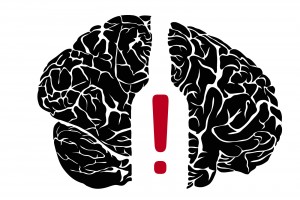The latest edition of the British Columbia Medical Journal contains an article on how marijuana affects your reproductive health.
Dr. Dunne is an assistant professor in the Department of Obstetrics and Gynecology at the University of British Columbia. She is the author of the linked review above.
Products of the Cannabis sativa plant like marijuana and hashish are most popular in North America. Since October 2018 smoking recreational marijuana is legal in Canada.
The medical community has some concerns, as we do not fully know the long-term effects of smoking marijuana. In the following I will summarize the effects on the male and female reproduction based on Dr. Caitlin Dunne’s report.
Consumption of marijuana
Marijuana contains over 500 compounds, of which 100 are cannabinoids. The ingredient that produces the high a user gets is due to tetrahydrocannabinol (THC). Cannabis is available in different forms. It can be smoked (raw leaves or extract), but it can also be converted into edibles. Ingestion of cannabis creates a longer-lasting experience. The reason for this is that the liver metabolizes cannabis into more psychoactive forms by the liver enzyme, cytochrome P-450. Smoking marijuana can irritate the airways; oral consumption of cannabis products can lead to vomiting, nausea and disorientation.
Contaminants in cannabis such as pesticides, microbial toxins and metals can also be harmful to recreational marijuana users.
Endocannabinoid system
Researchers found endogenous cannabinoids in the brain that function as messenger molecules. They need to activate their targets, the cannabinoid receptors, called CB1 and CB2. CB1 receptors are found mainly in the central nervous system. CB2 receptors are located mainly in the immune system. Reproductive organs have their own cannabinoid receptors. The lining of the uterus contains only CB1 receptors. Ovaries and testicles both use CB1 and CB2 receptors. THC from smoking or ingesting marijuana can stimulate these cannabinoid receptors also. But compared to the body’s own cannabinoids THC is much stronger. This leads to more pronounced effects that concern many physicians.
How marijuana affects your reproductive health: female fertility
The normal functioning of the body requires that the hypothalamus send gonadotropin-releasing hormone (GnRH) to the pituitary to release follicle stimulating hormone (FSH) and luteinizing hormone (LH). The FSH release happens mainly in the first two weeks of the menstrual cycle. LH is released in the 3rd and 4th week of the menstrual cycle. Only when the female hormone rhythm works can a follicle in the ovary mature and ovulate normally. After ovulation the corpus luteum needs further LH stimulation to start prednisone production, which helps with embryo implantation and with sustaining the pregnancy.
THC from cannabis consumption interferes at all the levels of these hormone actions. Cannabinoids suppress GnRH, FSH and LH release.
This is the reason why moderate to heavy users of marijuana have infertility problems. If a woman is a moderate to heavy consumer of marijuana she cannot ovulate normally, and hence she has difficulties getting pregnant.
How marijuana affects your reproductive health: pregnancy
THC from cannabis use can cross the placental barrier. Levels in cord blood are three to six times lower than the mother’ blood level, as the placenta attempts to detoxify THC.
Prenatal exposure to cannabis can interfere with fetal growth and alter neurodevelopment. These children can have permanent effects regarding academic achievement and intellectual capacity. Other risks are hyperactivity, attention-deficit disorder, and impulsivity, but also future substance abuse.
CB1 receptors seem to regulate mitochondria, the energy packages of cells and cellular adenyl cyclase.
The end results are mitochondrial dysfunction and oxidative stress.
Clinical studies regarding cannabis use in pregnancy
Recently a BC study followed 243,140 pregnant women. Over an 8-year period cannabis use rose from 2.2% to 3.3%. Closer analysis of the pregnant cannabis group showed an increased risk of poor perinatal outcomes. 47% had smaller babies than expected (“small for gestational age” is the medical term). 27% were born prematurely, there was a risk of 2.4-fold that the baby died in the womb (“intrapartum stillbirth”). Women who used cannabis often used other illicit drugs as well. They also often had a history of mental illness. The authors relied on self-reporting, which means the cannabis use likely was underreported.
An American study
An American study from 2016 identified 7,851 pregnant patients who used cannabis. Like the BC study they showed a low-birth weight and preterm deliveries. But when the authors controlled for confounding factors, namely mainly tobacco use, statistical significance disappeared.
Often marijuana users are also tobacco users. Tobacco has long been proven to lead to prematurely born babies and babies that are too small for their age. The BC study had controlled for tobacco use and thee results were only due to smoking or consuming marijuana.
How marijuana affects your reproductive health: male fertility
Males on cannabis also contribute to infertility of the couple. The hypothalamic/pituitary/testicle hormone axis needs to also be intact for proper sperm cell maturation to take place. In medical language sperm cells are spermatozoa. The hypothalamus generated gonadotropin-releasing hormone (GnRH), which stimulates the pituitary to release FSH and LH. LH stimulates testosterone production in the Leydig cells of the testicles. FSH stimulates spermatogenesis (production of sperm cells) from the so-called Sertoli cells. Testosterone, along with FSH provides a stimulatory effect on spermatogenesis. Whenever a system is that complicated, much can go wrong. Sperm cells contain both CB1 and CB2 receptors. When the man uses marijuana regularly, THC exposure can significantly interfere with CB1 and CB2 receptors.
Effects of THC on sperm motility, sperm concentrations and DNA
This leads to sperm cell mobility reduction. In an experiment where THC was added to sperm from 78 men in vitro (Petri dishes) researchers simulated high marijuana users and moderate marijuana users.
They found that lower THC concentrations caused 28% sperm motility reduction, high TCH caused 56% sperm motility reduction. Many other publications exist that documented similar results and correlated these findings with infertility of couples.
Studies on sperm cell motility and marijuana use are inconsistent. In 2019 a study came out from the Chan Scholl of Public Health where researchers analyzed 1143 semen samples and 317 blood samples.
They found no difference in terms of findings among men who smoked marijuana versus men who never smoked Marijuana. They looked at sperm concentrations, DNA aberrations of sperm cells.
This leaves many questions open regarding marijuana toxicity.
Conclusion
Marijuana affects the reproductive organs, but it is easier to document in women than in men. In women marijuana has an effect on fertility and on pregnancy, which is measurable. However, in men the results of investigations have been conflicting. Here is a statement of the Society of Obstetricians and Gynecologists of Canada. They believe “there is sufficient evidence of harm to advise women to avoid cannabis when pregnant”. Use of marijuana is also not advisable for women who are breastfeeding. At this point a similar clear suggestion regarding reproductive health cannot be made to men, but the in vitro study with TCH suggests that it is wise to refrain from marijuana when a man tries to father a child. Further studies will likely clarify these outlines.







